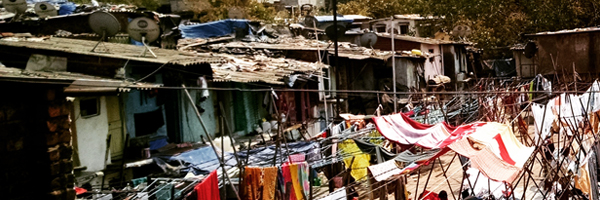Mumbai or ‘Slum’bay? Why Slum Tourism Will Continue To Boom In The City

Mumbai may house some of India’s best skyscrapers but it also contains the country’s largest slums. And that is an eyesore for the financial capital of the country. “Today Mumbai is known as the ‘slumbay”. People come here to see the slum tourism. This is not good for a city that aspires to be world class. Not just private agencies but government should actively get involved to solve this problem”, warns Prem Nath, a noted architect and urban planner.
The city’s Slum Rehabilitation Authority (SRA) was supposed to provide proper housing to the 8-10 lakh slum dwellers living in the city, thus saving the city’s land parcels from further encroachment. But 20 years down the line, the agency has been able to rehouse only around 1.5 lakh people, about 10% of its announced targets. Let’s take a look at the ‘hits & misses’ of the SRA scheme.
The Hits –
· 60% of Mumbai’s population lives in shanties with no access to drainage, water or electrical systems. The SRA scheme is unique because it provides a platform for these slum-dwellers to gain access to proper housing and infrastructure.
· By enabling private developers to partner with them, the SRA is able to access large quantities of low-cost housing stock. In return, private developers are given a portion of the land to build premium and high-end housing units.
· This method allows for a healthy mix of low, mid and high-income groups in a region, unlike other models which see the poor pushed towards the periphery of the city. This has led to the SRA model being considered by other state governments for slum redevelopment across India.
The Misses –
· The SRA was originally tasked with redeveloping slums that have come up until 1995. This was then changed to the year 2000 to cope with the rising number of slum-dwellers. And considering that these slum-dwellers form a large portion of voters, political pressures may see this cut-off date get changed yet again.
· This is disastrous because ineligible slum-dwellers go and settle into new slums, confident that their slums will also be covered under the SRA scheme in time. This leads to new slums coming up faster than the SRA can get them redeveloped.
· The government has not prepared any study to identify the slums that fall under the SRS scheme and this makes it difficult to identify the exact number of slum dwellers who are eligible for new homes. In many cases, bogus Allottees are given houses while real slum dwellers are left with no homes.
· Several developers get into slum redevelopment only to gain access to lucrative Transfer of Development Rights (TDR) certificates which they trade with other developers to build taller structures. Slum dwellers are usually kept out of the loop during such transfers, leading to slum rehabilitation projects remaining stuck for years.
· The program’s biggest mistake is that it promotes free housing. Buying a home in Mumbai could set a home buyer back a crore or more, yet under the SRA scheme, slum-dwellers are eligible to get free housing in prime areas by simply squatting in an area. In fact, shanties in slums are selling for anywhere between 8 to 14 lakhs, as people move into slums in the hopes of getting free SRA homes which can be sold for ten times the price.
If the government is serious about making Mumbai slum-free by 2022, then it should look at revamping and strengthening the SRA scheme to tackle these problems. Otherwise, the city make just end up being overwhelmed.
Ashwini Priolker, Reporter, NDTV








